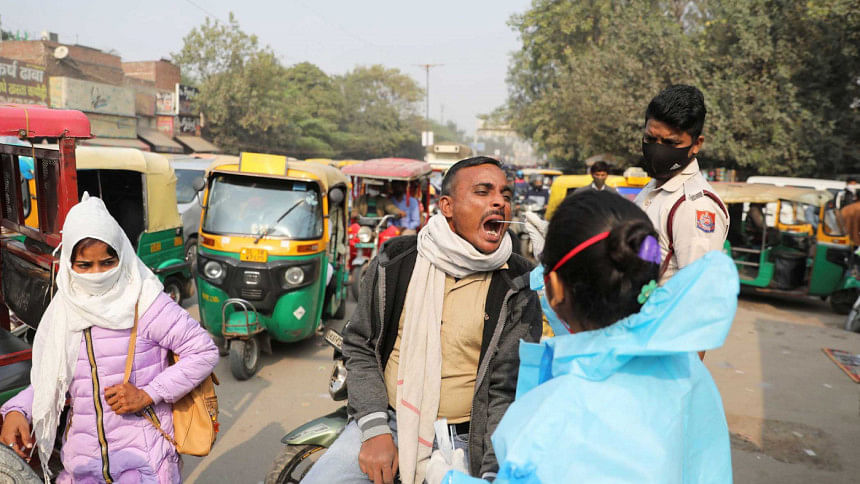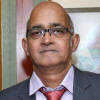India’s Omicron challenge on multiple fronts

Since the first Omicron case of Covid-19 was detected in Karnataka on December 2, instances of the most rapidly mutating and contagious variant of the disease have been on the rise across India. In the last four weeks, the number of Omicron cases has shot up to 578 (as of December 27 morning). It is quite natural that there is widespread anxiety, especially after the daily caseload of Covid-19 has been on a steady and sharp decline over the last few weeks.
The gradual spread of Omicron has raised the level of alarm and anxiety all around India, including at the highest level of government. Part of the reason behind Prime Minister Narendra Modi appearing in the unscheduled televised address to the nation on the night of December 25 was to amplify the threat perception following the Omicron cases. It was the address in which he announced extending the Covid vaccination drive to 15-18 age groups and booster dose to vulnerable people aged above 60 years, including those with comorbidities, from the New Year.
Scientific evidence so far indicates that Omicron is much less severe than the Delta variant, which has so far been the dominant variant across the world, including India. According to public health experts, the Omicron variant is at least three times more transmissible than Delta. What has added to the prevailing fear about Omicron is the projection of the mathematical modelling of the Indian Institute of Technology (IIT) in Kanpur that Omicron will peak by February 2022. Given the mild nature of Omicron so far, the experts suggest focusing on checking its speedy spread.
Considering that a good number of Omicron patients in India don't have international travel history, a limited community transmission of the latest variant has already begun. As of December 25 morning, 183 of the Omicron cases in India were analysed, 121 of whom were foreign returnees, while 44 had no foreign travel history. The details of 18 people hit by Omicron were unknown, according to Balram Bhargava, director general of the Indian Council of Medical Research. That is why public health experts favour prioritising community surveillance and a strict watch on clusters reporting an unusual (unusual because major parts of the country are witnessing a steady fall in Covid cases) number of cases to not only follow up on positive cases, but also their contacts on a day-to-day basis. There are two objectives behind this: a) To monitor the clinical status of the patients; and b) To analyse their symptoms, because this variant is capable of mutating like no other earlier variants.
A major challenge for India is to scale up Covid vaccination to take the threat posed by Omicron head-on. Of the 183 Omicron cases analysed as of December 25, 91 percent (87 in real terms) are those who were fully vaccinated, with three having had booster shots as well, while seven were unvaccinated and two partially vaccinated. It is, therefore, critical that India steps up its vaccination drive.
Eminent virologist Shahid Jameel said though full vaccination "is unlikely to stop symptomatic infection, a combination of prior infection and vaccination in a large fraction of adults will ensure low rate of severe disease, hospitalisation and mortality." According to health ministry statistics, India has so far fully vaccinated 61 percent of its 940 million adult population, while 81 percent have been given the first dose, as per figures on December 24, 2021. With just a few days of the outgoing year remaining, the target of fully vaccinating the entire adult population by this year's end, as was being visualised by the government, is going to elude public health policy planners.
As the shadow of Omicron looms larger than ever, the government has to race against time to complete the vaccination campaign. The door-to-door vaccination drive appears to be struggling to get the desired level of momentum, largely due to the issue of vaccine hesitancy mostly among the rural population. This has resulted in widening the gap not only between rural and urban vaccination pace, but also among fully and partially jabbed there. There has, therefore, been a suggestion that vaccination be made mandatory.
Public health experts also want India to quickly come out with a clear policy on the need for booster doses and vaccination of children now that many schools across the country have reopened after a long closure forced by the pandemic. The debate is already on whether booster doses should be administered—and if so, when—particularly to vulnerable sections of the population like healthcare workers, the elderly or those with comorbidities. As late as on December 24 this year, the Indian Council of Medical Research had said it was still studying scientific data before coming out with a booster dose policy. But Modi's announcement on December 25 of "precautionary dose" (which is called booster dose in other parts of the world) for those above 60 years of age sets at rest the speculation as to when the booster dose administration will start.
Two factors seem to have made out a strong case for a booster dose. First, nine out of ten Omicron cases in India have been found to be with full vaccination, and second, nearly 90 percent of India's vaccination drive has been done using AstraZeneca's Covishield, which is reportedly not very effective in checking Omicron. It has been suggested by some experts that Indian jab manufacturers go public with their data if and how much their products work against Omicron.
The onset of a fresh spell of Covid-19 was a question of time. India could not have remained insulated. According to experts, what needs to be watched is the community transmission potential of Omicron in India in the coming weeks.
The government of Prime Minister Modi and the state governments need to guard against any lacunae in the handling of Omicron challenge after the devastating second wave overwhelmed the healthcare infrastructure at several places earlier this year. The federal government has ramped up availability of oxygen, oxygen concentrators and plants, hospital beds and beds with ICU facility, medicines needed for Covid treatment and other related components of healthcare infrastructure. The challenge lies in their proper implementation.
Pallab Bhattacharya is a special correspondent for The Daily Star. He writes from New Delhi, India.

 For all latest news, follow The Daily Star's Google News channel.
For all latest news, follow The Daily Star's Google News channel. 



Comments